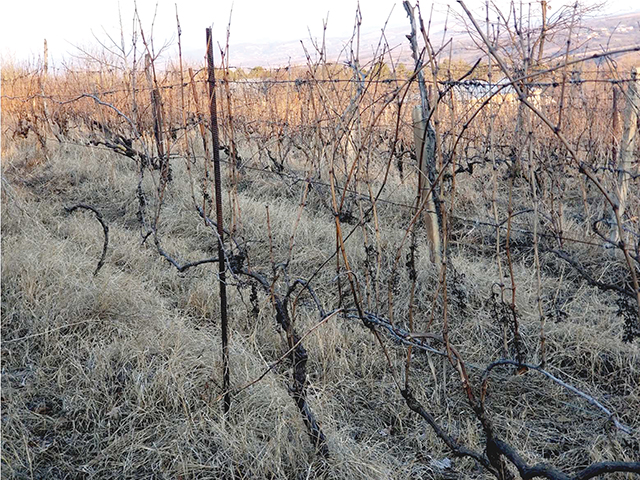Despite the oppressive summer heat, every year thousands of hard-working men and women venture into the fields across Georgia. They are there to tend to the nearly endless fields of vineyards that cover the nation, family vineyards that have been handed down through generations and are worked and cared for by teams of locals from neighboring villages. These fields are the birthplace of a special hallmark of Georgian cuisine and culture: Wine.
Wine in Georgia is synonymous with family and the home. It is a part of the very people that have produced it for over 8,000 years. It is at the core of their very national identity and culinary scene.
Additionally, it has an interesting history in the life of the ancient nation.
From the neolithic period, the concept of burying vessels with the juice of these grapes through the winter produced an interesting (and intoxicating) result. After generations of perfecting the craftsmanship of these subterranean vessels, the inhabitants of the southern slopes of the Caucasus began to produce the iconic Qvevri. While not the only vessel wine was made in, it quickly became the most prolific.
This large amphora-shaped clay vessel would be filled with the juice of these grapes. The number of varieties of these grapes in Georgia is estimated to be over 500, a staggering number for the small but diverse microclimate. With an inner coating of beeswax and covered with a lid and earth, the wine fermented, sometimes for up to 50 years.
Throughout the ancient and medieval ages, Georgian wine further welded itself to the region’s identity. In high art, royal drinking vessels were specifically designed for the beverage, while the commoner would always have a form of wine cup, be it a wooden bowl or polished horn. Throughout these formative years for the country, engravings and metalwork adorned the Qvevri and drinking vessels, featuring grapevines and other wine-related imagery.
Naturally, religion and wine became intertwined. Saint Nino, famed for bringing Christianity to Georgia, had her iconic cross traditionally made from bound grapevine branches. Many monasteries to this day still maintain their own vineyards, with the monks assigned to work the fields and produce the wine, selling it to help with church upkeep. As commerce and trade expanded, Georgian wine became prized for its unique flavor profiles when compared to other European variants.
Homemade wine maintains a special place on the palettes of those who enjoy Georgia’s mainstay historical and culturally iconic beverage
In the modern era, little has changed. When touring the rural village and towns of Georgia’s most popular winemaking region, this point is evident. Kakheti has a special place in Georgian winemaking tradition. Even for locals, there’s a special place for the wines of the Alazani Valley, and virtually every home there has its own wine production facility. For many homes, even the most modest, there are at least a few rows of grapevines adjacent to the family dwelling. When these grapes are cut from the vine and placed into buckets, a “runner” of sorts will come, take the full buckets and deliver empty ones to replace them. After a full load of grapes is ready, they must be pressed to release their juice. While many still keep the old method of stamping on them barefoot in a hollowed-out log, some opt for the slightly more modern hand-cranked press.

The juice, along with skins and other “imperfections,” runs into an interim container. This container is then brought to the emblematic subterranean Qvevri, with only the very top of its neck protruding above ground. The juice fills these containers to the very top. While some Qvevri are for personal use, others seem bottomless when empty due to their depth and breadth. Once filled, they are sealed with a specially fitted lid and the contents is left to ferment.
When made at home, this wine is drawn out with any sort of homemade or machine-made tool. From a hollowed out and dried gourd to a special syringe-like device, the wine is removed when ready and used to fill the glasses and cups that litter the family table. At supras (traditional Georgian feasts), the tradition is to have a specially designated Tamada, or toastmaster, call the attendees to a toast that ranges in topics such as family, country, God, and peace.
As the author can attest, these warm family-oriented events can draw long into the night. They bring family, song, and an immense amount of homemade food together around the historical and iconic drink. The hallowed liquid is cultivated, harvested, processed, and shared through thousands of generations of Georgians and the guests they so love to be with. For locals, it is a way of common life and a key to their past. For the guest and tourist, it is a vital part of experiencing Georgia in its most natural state.
Wine production has made its way into the mainstream, with large wine manufacturing taking up much of the commercial sector. As Georgia is now the 2nd largest producer in the Eastern European exporting market, much of what is found in shops and online is of a more common variety. While certainly not of lesser quality, there is something different about the curious and strong variety found in the cool basements of village homes. Just as a homemade dish has its unique flavors and notes, homemade wine maintains its special place on the palettes of those who enjoy Georgia’s mainstay historical and culturally iconic beverage.
By Michael Godwin














